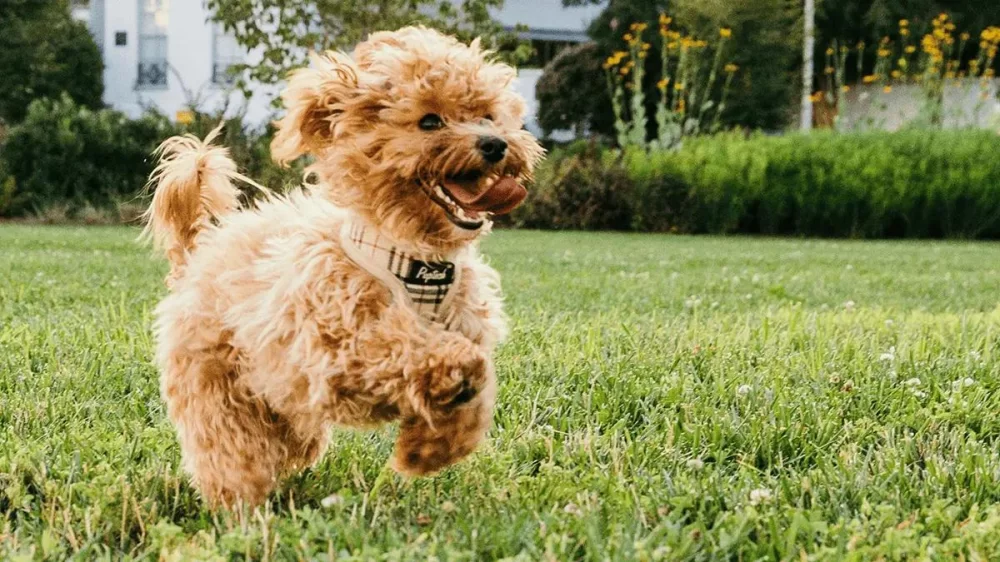
How to Create a Pet-Friendly Lawn
Creating a pet-friendly lawn is something that every pet owner dreams of. Not only do we want a beautiful yard, but we also want our furry companions to be safe and comfortable in it. Whether you have a dog, cat, or both, designing a lawn that accommodates your pets' needs is essential. After all, a happy pet means a happy owner. I know how important it is to balance aesthetics and functionality. In this article, I’ll share my journey and tips on how to create a lawn that your pets will enjoy, while ensuring it's healthy and safe for them to roam freely.
1. Choosing the Right Grass for Your Lawn
One of the first steps in creating a pet-friendly lawn is selecting the right type of grass. You want a durable grass type that can handle foot traffic, be resilient under paws, and recover quickly. Some of the best grass varieties for pets include Kentucky Bluegrass, Fescue, and Bermuda grass. These types are not only tough but also pet-safe. For example, Fescue grass is known for its ability to withstand heavy use and recover from wear and tear, making it an excellent option for households with active dogs.
2. Safe Lawn Care Products
When maintaining your lawn, always make sure you use pet-safe products. Conventional pesticides and fertilizers can be harmful to your pets, so opting for organic, pet-friendly lawn care solutions is essential. I remember when I first started fertilizing my lawn, I used a product that wasn’t labeled as pet-safe, and my dog ended up with an upset stomach after rolling in the freshly treated grass. Since then, I’ve switched to organic fertilizers, which are just as effective but safe for both pets and the environment.
3. Creating Shade and Comfortable Spaces for Pets
Pets, especially dogs, can get overheated during the summer months. To keep them comfortable, it’s important to design shaded areas in your yard. Planting trees or setting up a pet-friendly gazebo can provide them with the cool space they need. I’ve added a few large trees around my lawn, and it’s amazing to see how much my dog enjoys laying under them on sunny days. Not only do these shaded areas help protect your pets, but they also give your lawn a more inviting, tranquil atmosphere.
4. Ensuring a Safe Play Area
Many pets love to play, and a well-designed lawn can offer a perfect play area. However, there are a few precautions you need to take to ensure the space is safe. Start by making sure your fencing is secure, so your dog can’t run off. I found that even a small gap in my fence was enough for my dog to squeeze through! I had to reinforce the fence with higher posts and smaller gaps between the panels to keep him safely inside. Additionally, avoid using materials like gravel or sharp-edged stones that could hurt your pet’s paws. Instead, opt for softer materials like mulch or grass.
5. Preventing Lawn Damage from Pets
Let’s face it, pets can cause some damage to the lawn – whether it’s from digging, urine stains, or excessive running. However, there are ways to minimize these effects. When it comes to urine spots, I found that regular watering after your pet goes to the bathroom can dilute the urine and help prevent yellow patches. For digging, try to create a designated digging area for your dog, or reinforce the soil in places they typically dig. The key is to keep an eye on these behaviors and make adjustments to prevent any lasting damage to your lawn.
6. DIY Pet-Friendly Landscaping Ideas
Landscaping can be both functional and pet-friendly! I’ve found that creating small garden beds with pet-safe plants can be a great way to beautify your lawn while keeping your pet safe. For example, lavender and marigolds are non-toxic plants that add color and fragrance to your yard without posing any risk to your pets. I also recommend adding a few gravel paths or a pet-friendly play structure for your dog. These features will not only enhance the overall look of your lawn but also provide your pets with additional play and exploration areas.
7. Regular Lawn Maintenance for a Healthy Yard
Maintaining your lawn regularly is crucial for its health and for keeping it pet-friendly. Regular mowing, trimming, and watering will help your grass stay lush and vibrant. It also helps prevent issues like weeds or pests that could harm your pets. I personally make it a habit to mow my lawn every week during the growing season, ensuring that the grass stays healthy and that any pests or dead spots are promptly dealt with. Remember, a well-maintained lawn is a happy lawn for both you and your pet!
8. Training Your Pet to Enjoy the Lawn
It’s not just about the physical aspects of the lawn – it’s also about how your pet interacts with it. Training your pet to respect your lawn is important. For instance, teaching your dog not to dig or chew on plants can save you a lot of hassle in the long run. Start by providing positive reinforcement whenever your pet behaves appropriately in the yard. If they dig, gently redirect them to a designated digging area, and reward them when they use it. Training can take time, but the results will be worth it!
9. Getting Professional Help for Lawn Care
If you're not sure where to start, or if you need some extra help, there are many professional lawn care services that specialize in pet-friendly lawns. They can assist with everything from selecting the right grass to applying pet-safe treatments to your yard. I personally hired a local lawn care service when I first started, and it made a huge difference in the overall health of my lawn. They offered expert advice and tailored solutions that worked for both my lawn and my pets.








